Introduction to Wolves in Glacier National Park
Glacier National Park, located in Montana, is home to a variety of wildlife species, including wolves. The park is renowned for its rugged wilderness and stunning natural beauty, and the presence of wolves adds to its allure. These magnificent creatures have captured the imagination of visitors for decades, and they continue to be an important part of the park’s ecosystem.
Wolves have a long and complex history in Glacier National Park. They were once abundant throughout the park and played a vital role in the natural balance of the ecosystem. However, by the early 20th century, human activity had caused their population to decline drastically, and by the 1920s, they had been completely eradicated from the park.
Grey wolves started migrating from Canada and recolonizing in Glacier National Park in 1979. In 1986, Montana documented the first den in over 50 years located in Glacier National Park.
Visitors to Glacier National Park can witness these majestic creatures in their natural habitat, but it is important to remember that they are wild animals and should be treated with caution and respect. Wolves play a crucial role in maintaining the ecological balance of the park, and their presence adds to the overall experience of visiting this breathtaking destination.
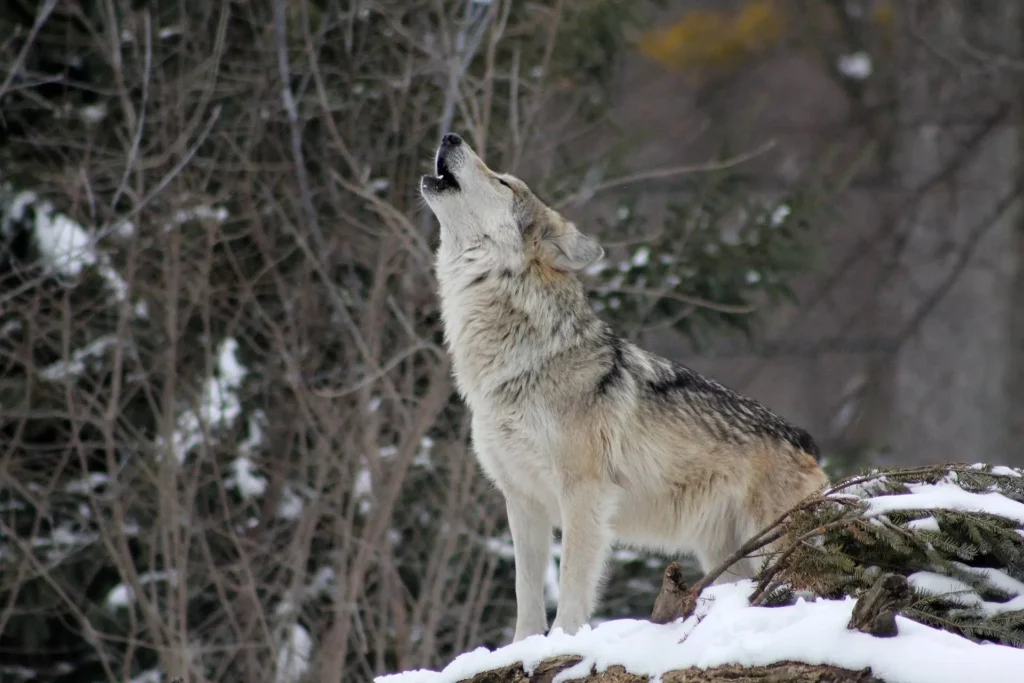
The History and Conservation of Wolves in the Park
The history of wolves in Glacier National Park is a story of decline, extinction, and recolonization. Wolves were once abundant throughout the park, but by the early 20th century, they had been almost completely wiped out by human activity, including hunting and trapping. By the 1920s, they were declared extinct in the park.
In the 1970s, the federal government recognized the importance of wolves to the natural balance of ecosystems and the need for their conservation. In 1980, the Endangered Species Act was passed, and wolves were listed as an endangered species. This set the stage to restore wolf populations throughout their historical habitat.
The recolonization of wolves to Glacier National Park has been a success story. Today, there are an estimated six to eight packs of wolves living in the park, and their presence has helped to restore the natural balance of the ecosystem. Each pack in this area typically contains 8 to 12 individuals. Wolves play a critical role in regulating the populations of prey species, such as elk and deer, and their presence has had a positive impact on the overall health of the park’s ecosystem, not to mention a crowd favorite.
Because of the success of wolves recolonizing the Glacier National Park area and the protection afforded them with the Endangered Species Act, they have nearly over colonized this area. Their numbers have had a great impact on the populations of deer, elk, and moose. They have been delisted more than once only to have courts overturn that decision with pressure from animal rights groups. Montana Fish, Wildlife, & Parks has implemented a controlled hunting season for wolves just as we have a controlled hunting season for many other species including deer, elk, and moose. This is to allow deer, elk, and moose populations to recover.
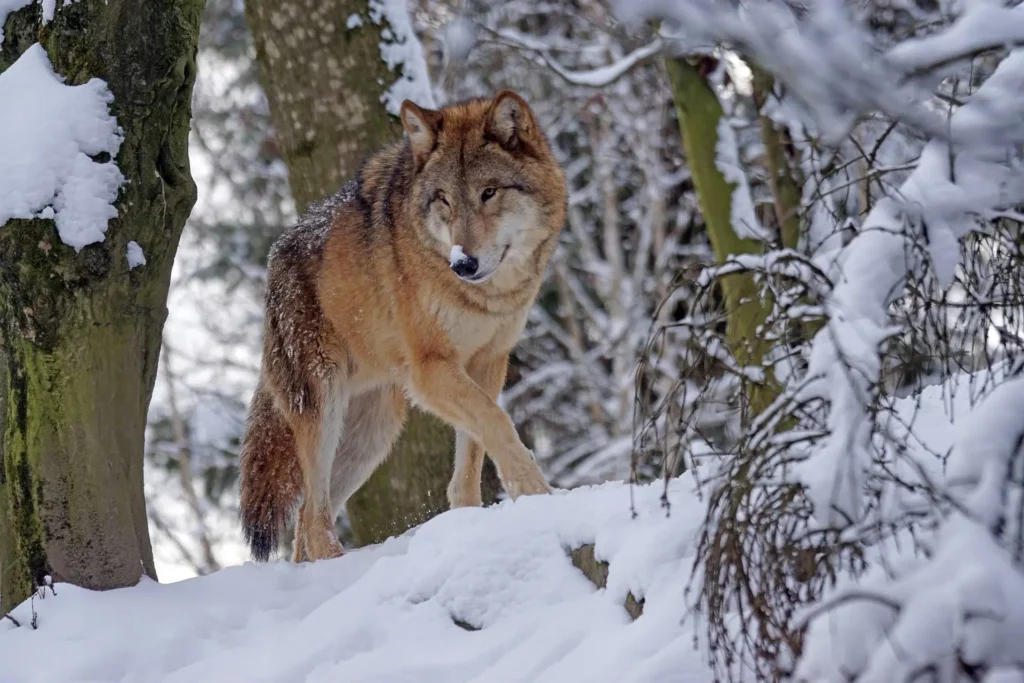
Understanding the Behavior of Wolves in the Wild
Understanding the behavior of wolves in the wild is essential for anyone interested in observing or studying these magnificent creatures. Wolves are highly social animals that live in family groups called packs. These packs are usually made up of a breeding pair, their offspring, and sometimes other related wolves. When the older offspring get kicked out of the pack, it’s not unusual to see a lone wolf.
Wolves are also highly adaptable and can survive in a variety of habitats, from forests to tundra. They are skilled hunters and often hunt in packs, using their intelligence and teamwork to take down large prey, such as elk, deer, and moose. Wolves will consume about 50% of what they kill.
Communication is key to the social structure of wolf packs, and they use a variety of vocalizations, body language, and scent marking to communicate with one another. Howling is perhaps the most well-known vocalization, and it serves as a way for wolves to communicate their location, establish territory, and bond with one another.
Understanding the behavior of wolves is also essential for their conservation and management. Wolves are often misunderstood and misrepresented in popular culture, which can lead to conflicts with humans. It is important to recognize that wolves are wild animals and should be treated with respect and caution.
Visitors to Glacier National Park should be aware of the guidelines for viewing wolves and other wildlife, and always maintain a safe distance. With responsible management and public education, we can ensure that these magnificent creatures continue to thrive at optimal levels in their natural habitat.
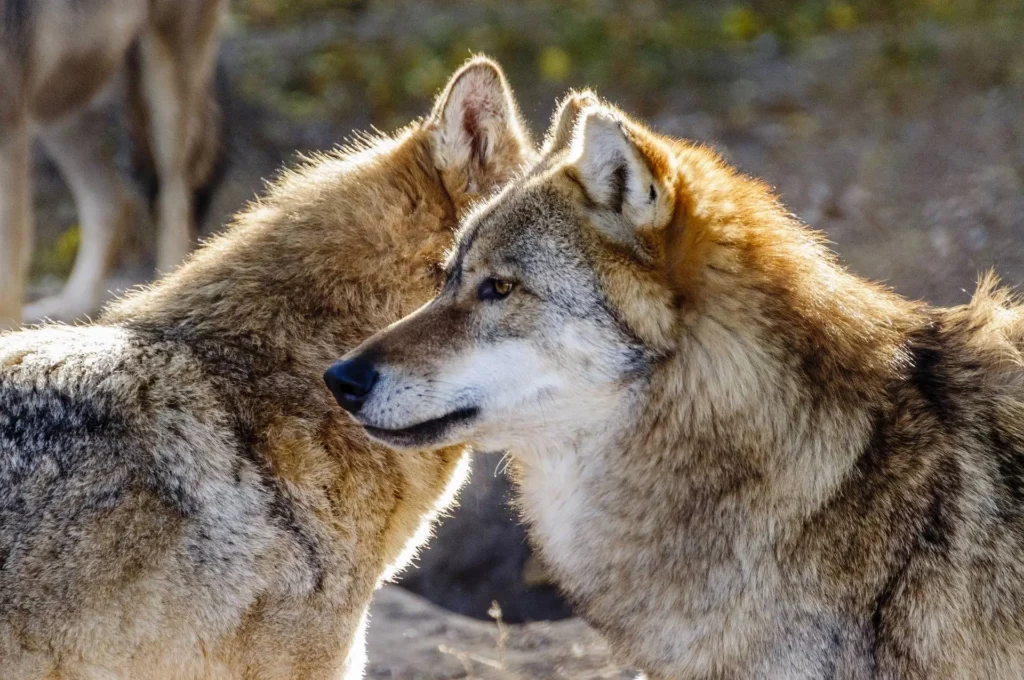
Wolf Spotting: Best Places to Observe Wolves in Glacier National Park
Glacier National Park is a great place to observe wolves in their natural habitat. Visitors to the park can enjoy breathtaking scenery while experiencing the thrill of spotting these elusive and majestic creatures. Here are some of the best places to observe wolves in Glacier National Park:
Many Glacier: This area of the park is known for its stunning vistas and abundant wildlife. Visitors can take a guided tour or hike the trails to observe wolves in their natural habitat. Many Glacier is also home to a wolf den, and visitors may be lucky enough to see wolf pups playing outside, from a distance of course.
Lamar Valley: Located in the northeastern corner of the park, Lamar Valley is a prime location for observing wolves. The valley is a popular spot for wildlife watching, and visitors can often see wolves in the meadows.
Saint Mary Valley: Saint Mary Valley is another great place to observe wolves. Visitors can take a guided tour or hike the trails to observe wolves in their natural habitat. The valley is also home to a large elk population, which is a primary food source for wolves.
Going-to-the-Sun Road: This iconic road offers stunning views of the park and is another opportunity to spot wildlife, including wolves. Visitors can drive the road or take a guided tour to observe wolves and other wildlife.
Two Medicine: Located in the southeastern part of the park, Two Medicine is a quieter area that is often overlooked by visitors. However, it is a great place to observe wolves, as well as other wildlife, such as grizzly bears and mountain goats.
Hidden Lake Trail: The Hidden Lake Trail is a popular hiking trail that offers stunning views of the park and is a great place to observe wolves. Visitors should be aware that the trail can be steep and challenging, and it is important to follow safety guidelines when hiking in bear and wolf country.
It is important to remember that wolves are wild animals and should be observed from a safe distance. Visitors should always follow park guidelines and stay well away from wolves and other wildlife. Of course, visitors should be aware that wolf sightings are never guaranteed and can be unpredictable.
Overall, Glacier National Park offers a unique opportunity to observe wolves in their natural habitat. With responsible management and public education, we can ensure that these magnificent creatures continue to thrive in the park for generations to come.
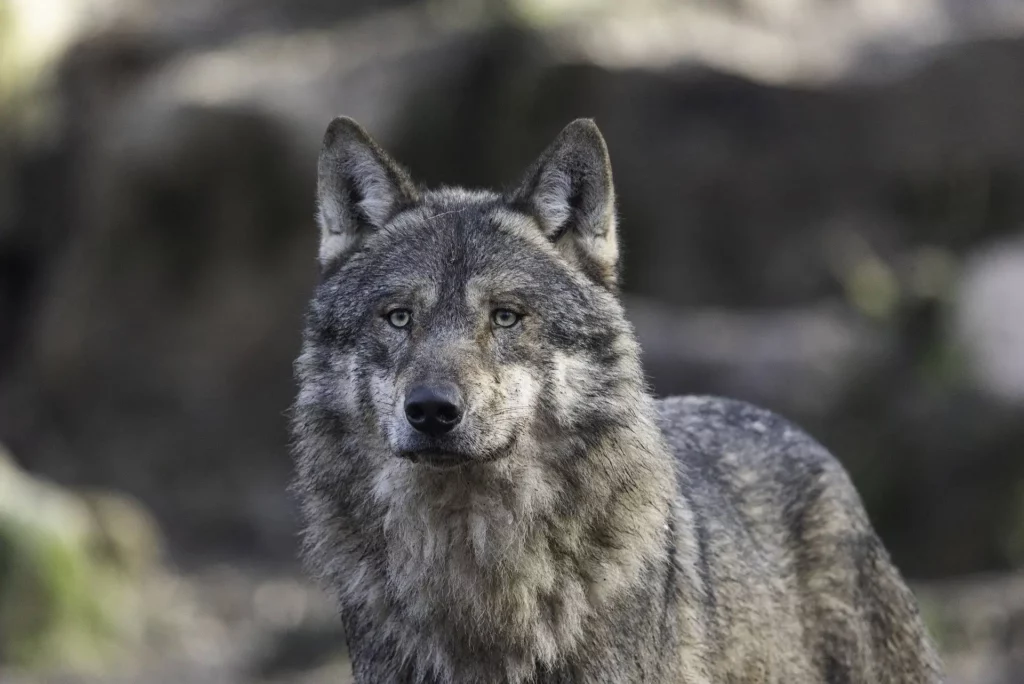
Safety Precautions and Guidelines for Viewing Wolves
While observing wolves in Glacier National Park can be an unforgettable experience, it is important to follow safety precautions and guidelines to ensure the safety of both visitors and the wildlife. Here are some safety precautions and guidelines for viewing wolves:
Maintain a safe distance: It is important to stay at least 100 yards away from wolves and other wildlife. This not only ensures your safety but also minimizes disturbance to the animals.
Use binoculars or a spotting scope: Using binoculars or a spotting scope allows you to observe wolves from a safe distance without disturbing them.
Avoid approaching wolf dens: Wolves are protective of their dens and may become aggressive if they feel threatened. It is important to never approach or disturb wolf dens.
Observe park guidelines: Glacier National Park has guidelines for viewing wildlife, including wolves. Visitors should familiarize themselves with these guidelines and follow them to ensure a safe and enjoyable experience.
Stay in designated areas: Visitors should stay in designated areas and hike known trails to minimize disturbance to wildlife and their habitat.
Be aware of your surroundings: Visitors should always be aware of their surroundings and watch for signs of wolves or other wildlife. If you encounter a wolf or other wildlife, maintain a safe distance and never approach or feed them.
By following these safety precautions and guidelines, visitors can enjoy a safe and memorable experience observing wolves in Glacier National Park. It is important to remember that wolves are wild animals and should be treated with respect and caution.
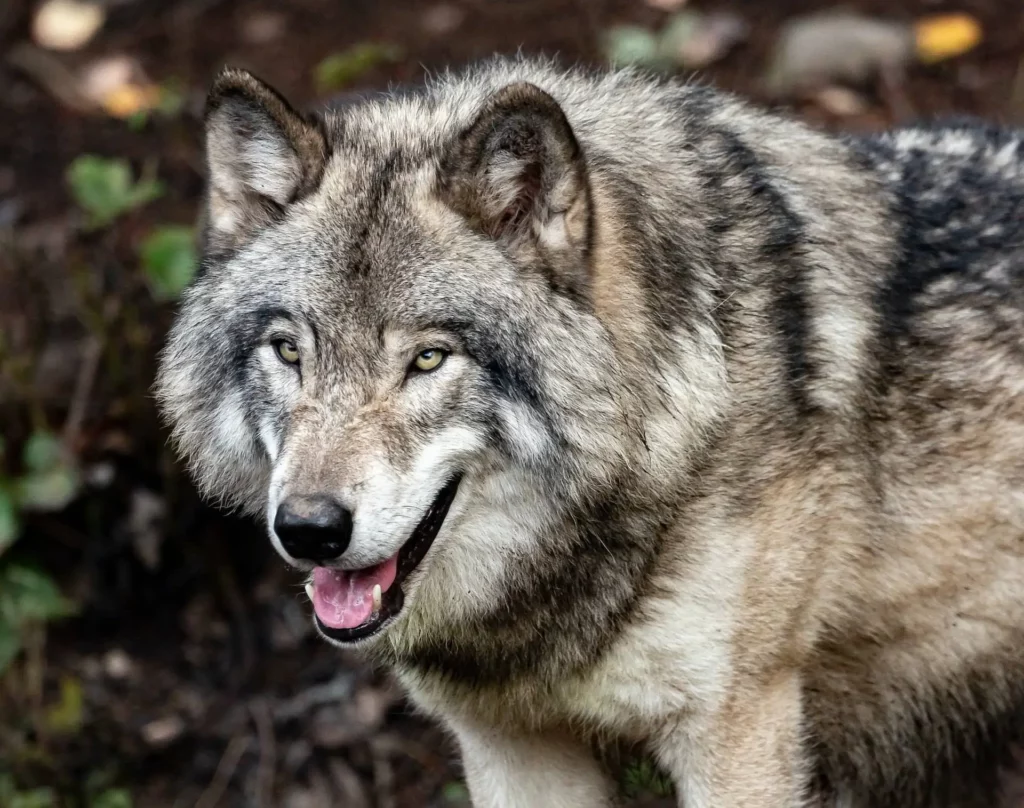
The Future of Wolves in Glacier National Park: Challenges and Opportunities
The future of wolves in Glacier National Park is a complex issue that involves management and conservation efforts. While wolves have made a successful comeback in the park since their recolonization in the 1980s, there are still challenges to finding the balance between their populations and the populations of their prey, deer, elk, and moose.
One of the challenges facing wolves in Glacier National Park is human-wildlife conflict. As the park becomes more popular with visitors, there is an increased risk of conflicts between wolves and humans, such as wolves becoming habituated to human presence.
Another challenge is finding and maintaining a balance in the populations of wolves and their prey. As the populations of their prey has diminished in Glacier National Park, they move on and prey on domestic livestock outside the Park which creates a conflict with a ranchers survival.
To address these challenges, park officials and conservation groups are working to develop management strategies that balance the needs of wolves with those of human visitors and local communities. These strategies may include measures such as education and outreach programs, habitat restoration, and predator control measures.
Despite these challenges, the future of wolves in Glacier National Park is hopeful. Continued management and conservation efforts, along with public education and outreach, can help ensure the survival and long-term viability of these magnificent creatures. By working together, we can protect and preserve the natural heritage of this iconic park for future generations to come.

